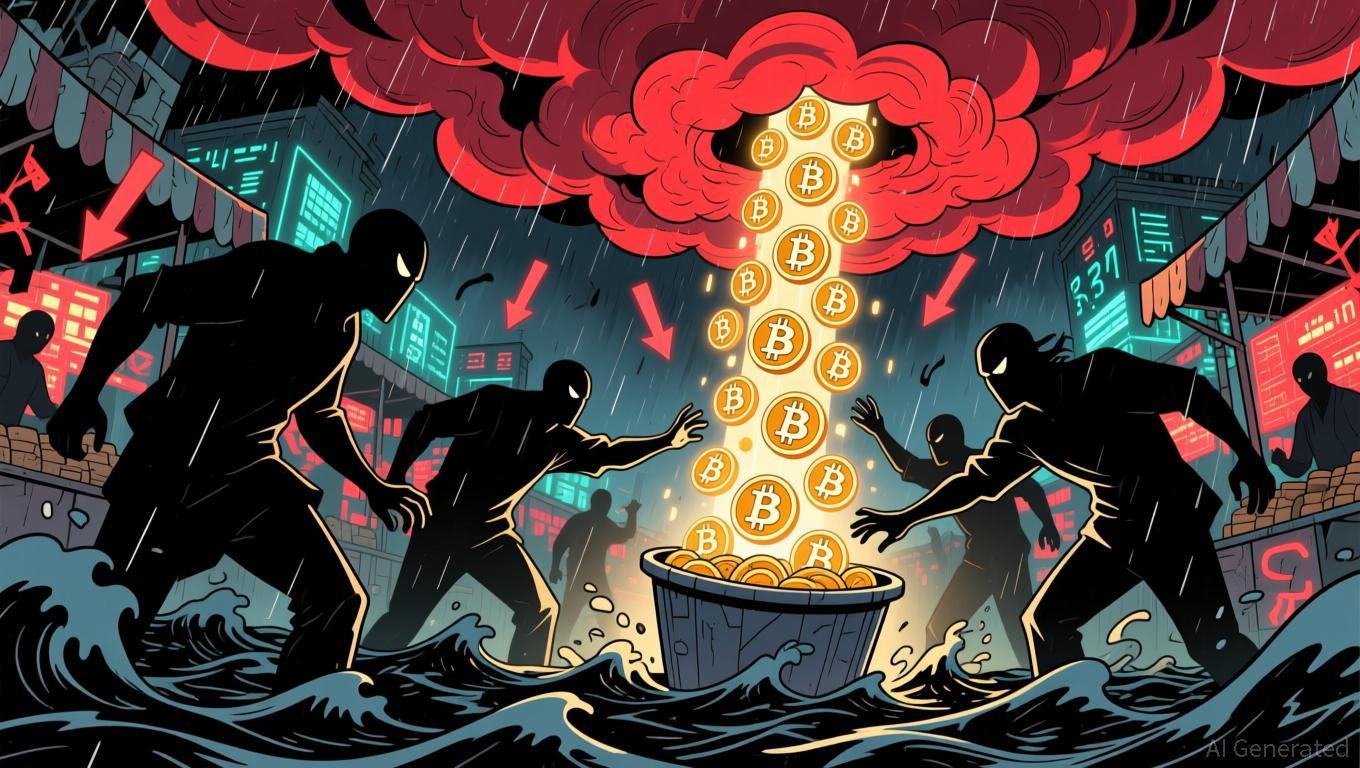The Federal Reserve's Change in Policy and How It Influences Solana's Price Movement
- Fed's 2025 rate cuts and QT halt injected liquidity, boosting Solana's TVL to $35B but triggering 20% price swings. - Solana's beta coefficient >1.5 highlights amplified volatility from Fed-driven liquidity shifts and policy uncertainty. - Institutional inflows of $2.1B into Solana projects demonstrate ecosystem resilience despite short-term price turbulence. - Experts warn Fed's data-dependent approach creates dual-edged dynamics, balancing risk-on sentiment with future policy uncertainty.
The Fed’s Balancing Act: Rate Reductions and QT Suspension
In October 2025,
Ending QT,
Altcoin Price Swings and the Fed’s Liquidity Tools
Digital currencies, especially altcoins like Solana, have long shown strong links to changes in macroeconomic liquidity. The Fed’s 2025 pivot—ending QT and starting to cut rates—has intensified this connection. As liquidity grows, risk appetite increases, channeling capital into volatile assets such as Solana.
Fourth quarter 2025 data highlights Solana’s price reaction to Fed policy news.
Experts point out the double-edged effect of these trends. While lower rates and more liquidity tend to boost risk-taking, they also introduce uncertainty about the Fed’s next steps. For example,
Solana’s Volatility: Beta and Historical Trends
Quantitative indicators further demonstrate Solana’s sensitivity to Fed-driven liquidity changes.
The beta coefficient—which measures an asset’s volatility compared to the broader market—also highlights Solana’s responsiveness to macroeconomic trends. While specific beta figures for Solana in late 2025 are
Institutional Flows and Ecosystem Strength
Despite frequent price swings, Solana’s ecosystem has shown notable strength.
Conclusion: Steering Through the Fed’s Policy Shifts
The Fed’s 2025 transition from tightening to expanding liquidity has created a turbulent but opportunity-filled landscape for Solana. Lower rates and the end of QT have funneled capital into risk assets, pushing Solana’s price upward over time but also increasing short-term volatility. Investors must weigh this balance: taking advantage of Solana’s sensitivity to liquidity while guarding against the Fed’s cautious, data-driven stance.
Looking ahead to possible further rate reductions in 2026, Solana’s path will depend on its ability to sustain institutional engagement and technological progress. For now, the relationship between monetary policy and the crypto sector remains central to Solana’s price story.
Disclaimer: The content of this article solely reflects the author's opinion and does not represent the platform in any capacity. This article is not intended to serve as a reference for making investment decisions.
You may also like
Bitcoin News Update: Bitcoin's Recent Decline: Can Institutional Investors Help Steady the Market or Intensify the Slump?
- Bitcoin's price drop below $85,000 has intensified debates as long-term holders offload over 400,000 BTC, per economist Peter Schiff's warning about "weak hands" deepening selloffs. - High-profile exits like Owen Gunden's $1.3B BTC liquidation highlight profit-taking by OGs, while institutions via ETFs have absorbed 2.39M BTC since 2024, per Ark Invest. - Market fragility worsens as gamma exposure forces dealers to sell near $85,000 support, but institutional demand could stabilize prices if buying conti

YFI Value Drops 4.78% Over the Past Week as Market Fluctuations Continue
- YFI rose 0.1% in 24 hours but fell 4.78% in seven days, with 14.2% monthly and 50% annual declines. - Price movements reflect broader market instability, not project-specific updates or governance changes in Yearn.finance. - Analysts predict YFI remains sensitive to macroeconomic trends and global investor sentiment in the near term. - Token consolidation continues without fundamental shifts, urging investors to monitor on-chain metrics and protocol updates.

Bitcoin News Today: Bitcoin Drops to $90K—Is This a Prime Buying Chance or the Start of a Deeper Downturn?
- Bitcoin fell below $90,000, pushing 70% of active capital into losses and erasing $120B in market value. - Short-term holders face >30% drawdowns, with fear metrics hitting 2-year lows as $1.9B in leveraged positions liquidated. - Analysts cite historical rebounds after extreme fear, but MicroStrategy's leveraged holdings risk further selling if prices drop. - Institutional actions and Fed policy uncertainty remain key factors, though oversold indicators suggest potential 40% near-term rebound.

Coast Guard Strengthens Prohibition of Hate Symbols to Combat Antisemitism and Extremist Activity
- U.S. Coast Guard reversed a policy to reclassify hate symbols like swastikas and nooses from "potentially divisive" to prohibited, following backlash from lawmakers and advocacy groups over antisemitism risks. - The reversal came after a leaked draft proposal aligned with Trump-era Pentagon directives, which critics argued weakened harassment definitions and accountability for hate incidents. - Coast Guard reaffirmed strict prohibitions on divisive symbols, emphasizing severe punishment for violations, b
